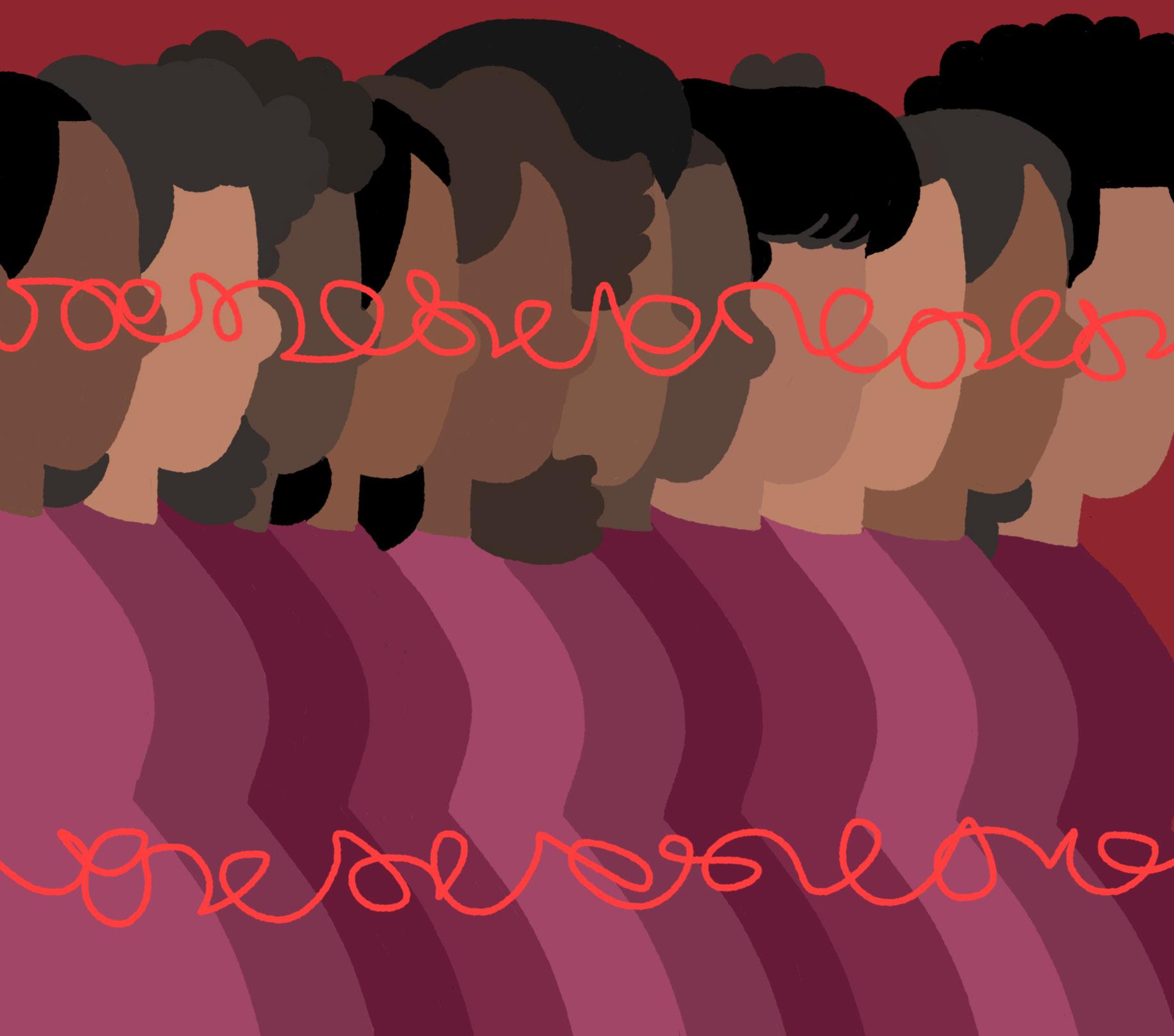
1
The Philadelphia Story: Another Experiment on Women
A Zine about Abortion, Medical Violence & The Imperative For Reproductive Justice
by Mariame Kaba (April
2023)
This zine is the first one in a series called “Archival Activations.” Using my personal collections, I feature specific documents and records and provide historical context. I hope that readers who engage the publications in the series will find some contemporary relevance in what is featured. My archival orientation is pulling from the past to make a better future. This publication is an instantiation of that orientation.
Thanks to Noah Berlatsky for research support and to Robin Marty & Esther Gim for feedback.
Design: Max Canner
Cover: Flynn Nicholls
2
Introduction
I purchased a document titled “The Philadelphia Story: Another Experiment on Women” from Lorne Bair Rare Books in 2021. The artifact is five stapled pages printed from typescript. It is a report and call to action published by The Philadelphia Women’s Health Collective and Friends (Collective) in 1972.
In the document, the Collective shared information about over a dozen low-income Black women who were bussed from Chicago to Philadelphia in order to receive experimental abortions in May 1972. The incident took place before Roe v Wade legalized abortion across the U.S. in 1973. Organized by medical doctor Harvey Karman & others, the women (who were in their second trimester) had abortions using Karman’s new “super-coil” technique, which resulted in various medical complications. In this report, the Collective and Friends accuse Karman of being “more concerned [with] undermining women’s control of their health care and propagating his own technology and reputation than with meeting the health needs of women” (p.3). The Collective also advocates for increased education around women’s health, new abortion and contraceptive techniques, and revised medical standards in order for women to control their own bodies and health.
In March 1973, the document was published in Science for the People magazine1. You can read it in full here: https://bit.ly/ phillystoryabortion
1 Philadelphia Women’s Health Collective & friends, “The Philadelphia Story (Another Experiment on Women),” Science for the People Vol. 5, No. 2, March 1973, p. 28-31.
3
Historical Context
Harvey Karman was a self-taught fighter for abortion access at a time when abortion procedures were illegal. He was also a shameless self-promoter who unethically experimented on unknown numbers of poor and marginalized women, leading to unnecessary suffering and permanent health complications. His legacy underlines the need for accountability, transparency and consent in reproductive health care, even, and especially, when practitioners are at risk from a coercive anti-abortion state.
Karman was born in 1924 and served in the Army Air Force stationed in England during World War II. A high school dropout, he went to UCLA on the GI Bill and earned a master’s in psychology. At UCLA, he started an underground abortion ring and served 2 ½ years in prison.
Karman eventually became director of psychosomatic research at LA’s San Vicente Hospital. He studied the emotional effects of abortion. He also continued to defy the law, helping pregnant people travel to Mexico for illegal abortions.
Frustrated with the expense and danger of abortion, Karman began working with abortion activist Merle Goldberg (she/her) to develop safer, easier and cheaper abortion measures. In the early ‘70s, Karman invented a soft, flexible tube or cannula that could be used in vacuum aspiration during first-trimester abortions. The device
4
replaced rigid tubes and reduced the risk of uterine bleeding.
Karman and Goldberg hoped the flexible cannula would allow women to perform abortions on themselves without professional medical intervention. This never happened. But the device is still used in medical abortion care today. It has also been adapted to other uses, including the diagnosis of uterine cancer.
The Los Angeles Times obituary, and others, largely laud him as a reproductive care pioneer 2
After developing the flexible cannula, Karman hoped his inventions could similarly revolutionize second-trimester care. This effort was less successful, as Tanfer Emin Tunc explained in a 2008 article in the European Journal of Contraception and Reproductive Health Care 3 .
Karman’s innovation was called the “super-coil technique.” It involved plastic strips 35 cm long and 4.6 mm wide, wound into 3 cm coils. The coils were attached to strings.
Up to a dozen coils were inserted into the uterus, where they remained for 12 to 24 hours. Over that time, the coils unwound to about 5-10 cm in diameter. As they did so, they were supposed to cut into the fetus and detach the placenta from the uterine wall. The coils could be gently extracted by pulling on the strings with forceps. The uterus would then contract, expelling the aborted fetus. If there was no contraction, Karman would use electric pump vacuum aspiration and a flexible cannula to remove the material.
Merle Goldberg arranged for Karman to travel to Bangladesh on an International Planned Parenthood Federation trip in 1971. The IPPF mission was to terminate unwanted pregnancies in women raped by Pakistani soldiers.
IPPF said between 2,000 and 2,500 women had successful abortions in Bangladesh. However, Karman and the IPPF did not report how many had been treated with the super-coil technique— nor was there any information on complications that had occurred.
Many medical professionals expressed concerns about Karman’s technique and its potential dangers. A follow-up study performed in Bangladesh by Drs. B. Mullick, W.E. Brennar and Gary Berger was not promising. The doctors reported that super-coil abortions led to multiple complications, including peritonitis and excessive bleeding.
2 Elaine Woo, “Creator of device for safer abortions,” Los Angeles Times, May 18, 2008, https://www. latimes.com/ archives/la-xpm2008-may-18-mekarman18-story. html
3 Tanfer Emin Tunc, 2008, Harvey Karman and the super coil fiasco: A forgotten episode in the history of American abortion technology. The European Journal of Contraception and Reproductive Health Care, 13(1), 4–8.
5
Karman could have reconsidered his decision to experiment with unproven techniques on marginalized women. Instead, he doubled down.
In order to prove the virtue of the super-coil technique to the medical community, Karman and Goldberg contacted Chicago’s Jane abortion collective. They found a number of women, mostly poor women of color, who needed second-trimester abortions.
They intended to undertake the abortions in Chicago, but anti-abortion activists reported them to the police before the procedures could happen. They then relocated 20 women to Philadelphia on the weekend of May 13, 1972. The results were “exhausting and frightening,” the Philadelphia Women’s Health Collective reported4.
Fifteen women who traveled to Philadelphia were in the second trimester and needed abortions. The super-coil technique was used on all of them.
Karman (who used the name “Jordan Bennett” while in Philadelphia) claimed that morbidity rates with the super-coil were negligible. But 9 of the 15 women had complications—a dangerous and unacceptable 60% morbidity rate. One woman had a perforated uterus that required a hysterectomy. Two had retained tissue. One suffered from peritonitis. Seven developed dangerously high fevers, and others developed anemia. Many women also said the procedure was painful.
Karman and Goldberg had arranged to have the abortion filmed by Channel 13, a New York City station. The goal seemed to be to publicize and validate the super-coil treatment. The women who received treatment objected to the filming, but it went on anyway. Members of the Philadelphia Health Collective said they “felt an almost overwhelming sense of powerlessness to effectively intervene or change anything that was happening.” They added, “The women from Chicago were mostly young, poor, and Black (many of them on welfare) and we feel that the exploitation and medical experimentation to which they were subjected was linked to this fact.”
The women of the Jane Collective were also frustrated and angry. One member, Miriam, noted that Karman would show his method
4 Philadelphia Women’s Health Collective & friends, “The Philadelphia Story (Another Experiment on Women).”
6
to other male medical professionals, but refused to teach the Jane members “because he wanted us to be dependent on him because we were women.” Karman’s hangers on were praising him while protestors gathered outside; Miriam said it was “like a Salvador Dali painting, all absurd.”
The cavalier and even cruel treatment of the patients in Philadelphia raised serious questions about Karman and Goldberg’s other work. The lack of detail on the use of the supercoil in Bangladesh was particularly worrying.
If Karman truly provided abortions for 2,500 women, as he claimed, there could have been hundreds of complications and numerous deaths. He may have been significantly exaggerating the details. But even so, it is likely that at least some women who were victims of traumatic sexual violence were subjected to further unnecessary pain and humiliation at Karman’s hands.
The Philadelphia Women’s Health Collective also investigated Karman and Goldberg’s work with the Women’s Medical Center in New York and found what it said were “questionable” medical practices. They were especially concerned about Karman’s reluctance to provide anesthesia for abortion patients, because he did not believe women experienced pain during the procedure.
Other practitioners denounced the experiments in Philadelphia; one critic said the super-coils were “high-class coat hangers.” Karman was arrested, fined $500 and largely ostracized from abortion practice.
It’s important to note that despite Karman, despite the protestors, Jane members were impressed by the determination of the Chicago women, who insisted that their choice to terminate their pregnancies be honored. The Jane members were horrified when the Philadelphia Women’s Health Collective published their criticism of the procedures. So were many of those who had had abortions. The Collective didn’t interview them, and it was in fact unclear who the authors of the paper were. The Chicago women felt they were portrayed as dupes, and that the account was tinged with racism. Two women who had undergone abortions via the super coil method testified on Karman’s behalf at his trial. One joined the Jane collective.
The women from Chicago had chosen to terminate their pregnancies even though they could see that Karman was not
7
entirely trustworthy. They chose what they felt was the best of bad options. Karman’s career underlines the dangers of criminalizing reproductive care. If you create a situation in which only those with a powerful sense of their own righteousness and infallibility dare to provide care, and where few mechanisms for professional accountability exist, patients are likely to suffer.
The reckless experiments in Bangladesh and Philadelphia also illustrate how poor and marginalized women often bear the brunt of abusive reproductive health regimes. These regimes may be presented as philanthropic or charitable. Those who implement them may be courageous in some ways, as Karman was. But without accountability, and without input and informed consent from those they claim to help, even committed advocates can do great harm.
8







